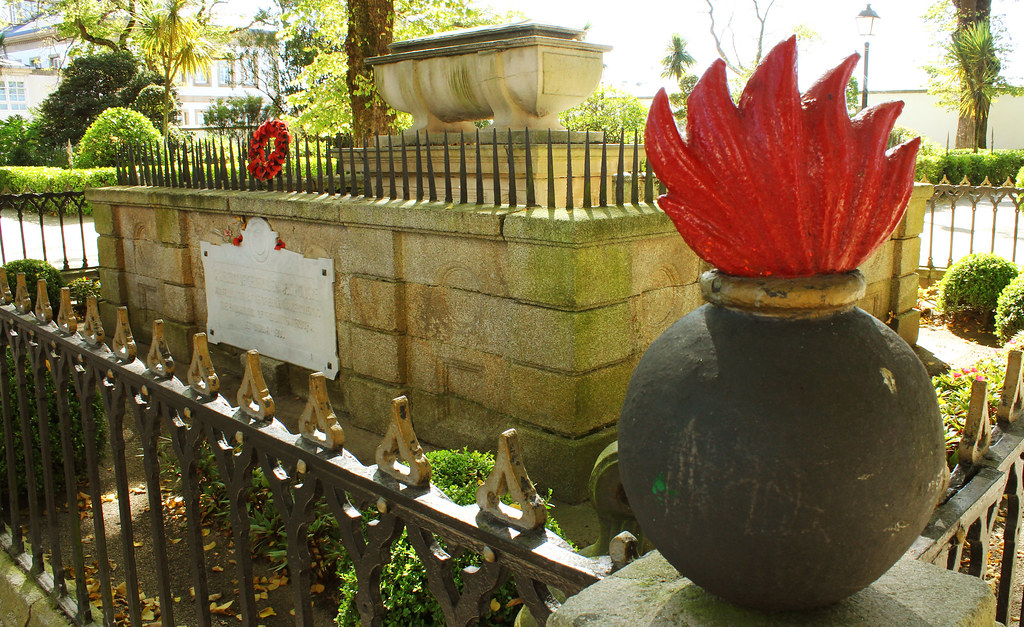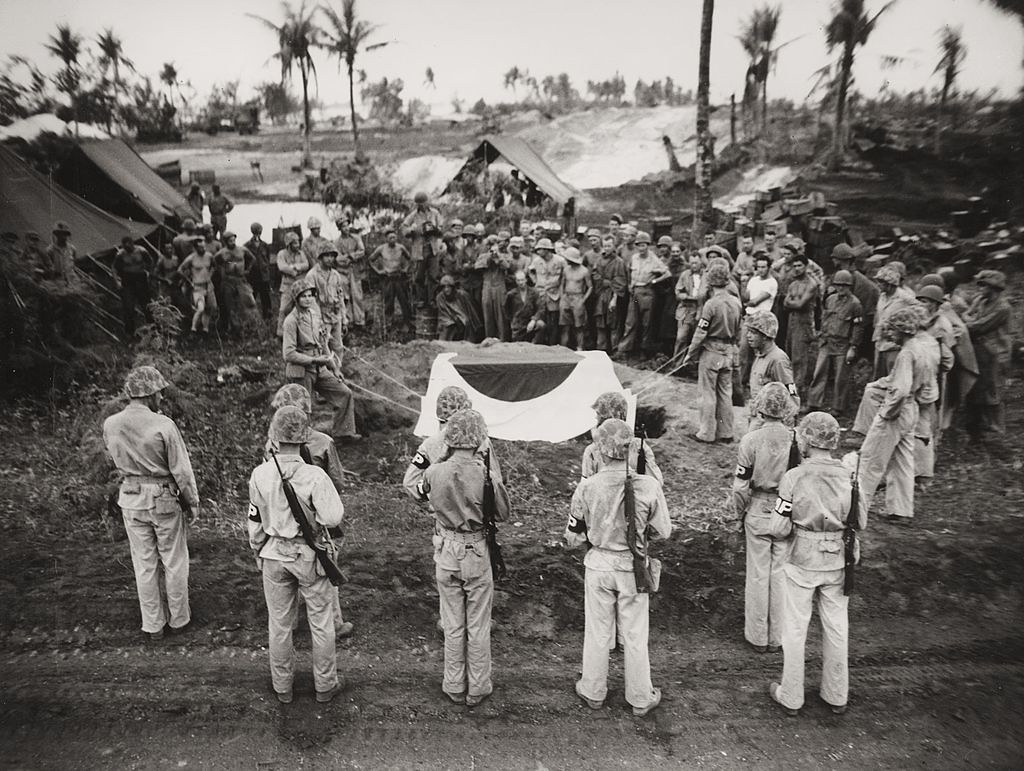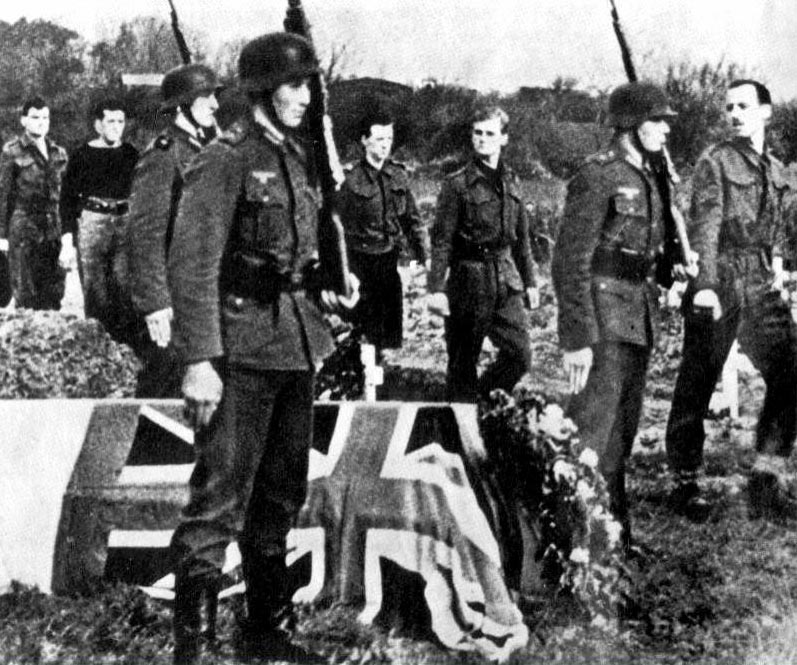Honors to fallen enemies: when war is not at odds with chivalry
War is a horrendous thing. The worst atrocities often occur in it, but even there there is sometimes a place for humane and honorable treatment of the enemy.
In the middle of a war, it is very difficult to put hatred aside to pay tribute to the enemy who fell in combat, but although it seems something very rare, it has occurred on many occasions throughout history. And it is that fighting for your Homeland does not mean fighting with hatred or renouncing honor, and that is known by many who have served their countries honorably in various armies for centuries. Here are some examples of soldiers who were buried with honor by their enemies.

In the city of Corunna, Spain, there is the tomb of Sir John Moore, located in the San Carlos Gardens. Moore was a British general who died in the battle of Elviña on January 16, 1809, wounded by a cannonball, when he fought alongside the Spaniards against the Napoleonic invaders, covering the embarkation of the British troops returning to their country. Moore was a hero, a gentleman, and an honest and humanitarian military man. When the Napoleonic troops managed to conquer La Coruña, the French Marshal Jean de Dieu Soult ordered the construction of this tomb in homage to his enemy who fell in combat (own photo).

Field Marshal Paul von Hindenburg of the German Army presiding over the burial for a British prisoner of war in Cologne, Germany, in 1917. In the photo are other German commanders and also several pilots of the British Royal Flying Corps (Photo: Imperial War Museum).

Members of the Australian Flying Corps 3rd Squadron firing salutes of honor at the funeral for German aviator Manfred von Richtofen, better known as the "Red Baron", during his burial in France on April 22, 1918. The day before Richtofen, the greatest ace in German aviation during World War I (with 80 credited kills), had been shot down by a Canadian pilot, Lieutenant Wilfrid "Wop" May. The Red Baron was a "knight of the air", as it was said at that time, and his enemies wrote the following epitaph on his grave: "Here lies a brave man, a noble adversary and a true man of honor. May he rest in peace."

Another moment of the burial of Manfred von Richthofen. The Australian soldiers presented him with weapons and saluted him as if one of their own had fallen.

Two German Luftwaffe airmen being herded with honors to Portobello Cemetery, Edinburgh, Scotland, on October 16, 1939, by members of the British Royal Air Force (RAF). The German airmen had been shot down by British fighters. Their coffins were covered with the German war flag of that time, which included the swastika. More than 10,000 people attended this funeral to pay tribute to their fallen enemies (Photo: Edinburgh News).
Members of the Royal Air Force (RAF) at the burial of four German aviators in England in May 1940. Several of the coffins of the German aviators were draped with German war flags, and salutes of honor were fired by fallen enemies.

An aviator observing the grave of a British Lieutenant shot down by the Germans in North Africa on June 14, 1941. The Germans buried him and put that white cross on his grave, right next to the downed plane. The cross reads, in German: "Here lies an unknown English Lieutenant, killed in air combat."

US Marines burying Lieutenant General Yoshitsugu Saito with the Japanese flag on July 10, 1944. Saito fell in the Battle of Saipan, in which he was the highest command of the Japanese Army defending that island. His funeral was presided over by General Holland Smith of the United States Marine Corps (Photo: Universal History Archive).

German Luftwaffe servicemen at the burial of two British airmen, Sergeants Butlin and Holden, in Jersey in 1943. Their coffins were draped with British flags. Jersey, like the remaining Channel Islands - located near the French coast - were the only British Crown territories occupied by Germany in World War II.

Wreaths deposited by German Luftwaffe aviators at the burial of British aviators Butlin and Holden in Jersey. The crowns were decorated with swastikas and Iron Crosses.

German soldiers at the grave of a British military man, covered with the naval flag of the United Kingdom. In the background, allied prisoners of war paid tribute to the deceased. I have not found any information on when or where this photo was taken.

Philippine Army soldiers paying tribute to the Spanish soldiers who fought at the Siege of Baler (1898-1899). The courage of those Spaniards, known as "the last of the Philippines", deserved the homage of the first president of the country, Emilio Aguinaldo, who described his defense of the Church of San Luis, in Baler, as "an epic so glorious and so typical of the legendary courage of the sons of El Cid and Pelayo." The Philippine Army pays this tribute annually.
|
Don't miss the news and content that interest you. Receive the free daily newsletter in your email: |
- Most read
- The 'hole' without civil flights around Paris during the opening of the Olympic Games
- Stunning footage of the F-15QA Ababil in flight recorded from its cockpit
- The firearms used by the Pontifical Swiss Guard, the smallest army in the world
- The most distant deployment of the Spanish Air Force in Australia and New Zealand
- Eurofighter vs F-35: the opinions of professional pilots on these advanced fighters
- The first photo of an F-16 fighter with Ukrainian insignia and the details it has revealed
- This is the driver station of an M1 Abrams tank and the impressive start of its engine

 ES
ES







Opina sobre esta entrada: